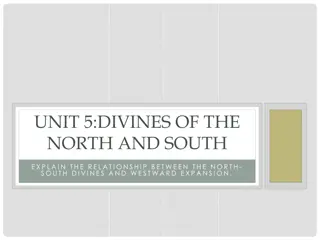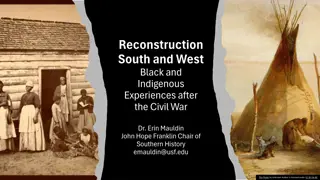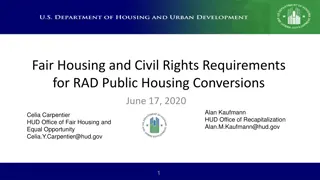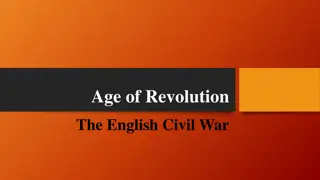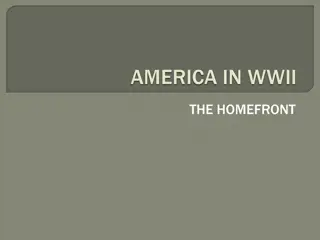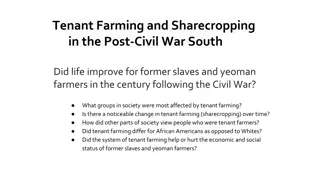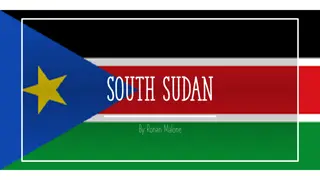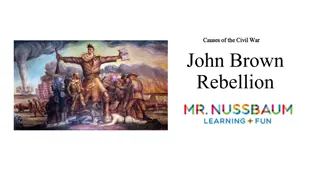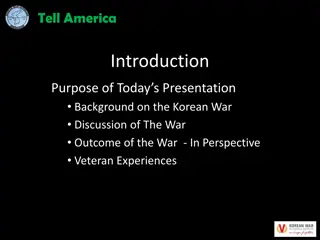Life in the Old South Pre-Civil War
Southern economy thrived on cotton as the king crop, leading to the growth of the Cotton Kingdom and expansion of slavery. White Southerners were divided between the cottonocracy and small farmers, while African American Southerners faced challenges as both free individuals and enslaved laborers. Slave life was harsh under strict codes. Explore the socio-economic dynamics of the Old South through this insightful content.
Uploaded on Feb 26, 2025 | 2 Views
Download Presentation

Please find below an Image/Link to download the presentation.
The content on the website is provided AS IS for your information and personal use only. It may not be sold, licensed, or shared on other websites without obtaining consent from the author.If you encounter any issues during the download, it is possible that the publisher has removed the file from their server.
You are allowed to download the files provided on this website for personal or commercial use, subject to the condition that they are used lawfully. All files are the property of their respective owners.
The content on the website is provided AS IS for your information and personal use only. It may not be sold, licensed, or shared on other websites without obtaining consent from the author.
E N D
Presentation Transcript
THE OLD SOUTH Pre-Civil War
SOUTHERN ECONOMY Cotton was the KING crop Southerners could not keep up with demand Too difficult to remove the seeds Cotton Gin invented in 1793 by Eli Whitney Could clean the cotton of 50 people
COTTON KINGDOM AND SLAVERY In 1792 only 6,000 bales of cotton were grown by 1850 2 million bales were grown. Cotton Kingdom- southern area that produced large amounts of cotton. Slavery spread with cotton
AGRICULTURAL SOCIETY Limited industry The south grew cotton, rice, sugar cane and tobacco The south also led the nation in livestock- hogs, oxen, horse, mules, and cattle. Most southerners invested in land and slaves
WHITE SOUTHERNERS The cottonocracy Planter- someone who owned 20 or more slaves (only 1 in 30 in 1860) Many became political leaders Hired overseers to run their plantation Cottonocracy- people who owned 50 or more slaves (less than 1 percent) Their views dominated the south Behaved like European nobility
WHITE SOUTHERNERS (CONTINUED) Small farmers 75% of southerners were small farmers Owned their own land Had 1 or two slaves Worked with their slaves in the fields Poor whites Rented the land they farmed Barely made ends meet Lived hard lives
AFRICAN AMERICAN SOUTHERNERS Free African Americans In 1860 over 200,000 free blacks lived in the South Not allowed to vote or travel Some states forced them to move or be enslaved Enslaved African Americans Made up 1/3 of the South s population. Teenagers worked between 12 and 14 hours a day Some were skilled craftsmen or were allowed to hire out
SLAVE LIFE Slave codes Slave codes are laws designed to keep slaves from running away or rebelling Could not gather in groups larger than three Could not leave their home without a pass Could not learn to read or write Could not testify in court Hard work Worked from can t see to can t see up to 16 hours a day Some slaves were whipped to make them work harder
SLAVE LIFE (CONTINUED) Family life Slave marriage was not recognized Husbands and wives could be sold Children could be sold Large plantations sometimes allowed large families to stay together African culture and stories were passed to the children Religion offers hope Many slaves were Christian and allowed to attend church White ministers preached to the slaves
RESISTANCE AGAINST SLAVERY Many slaves broke tools, destroyed crops and stole food Many tried to escape north, but few made it Patrols would question and search for escaping slaves
DENMARK VESSEY Planned a revolt in 1822 Was betrayed before the revolt began He and 35 others were executed
NAT TURNER Led a revolt in 1831 Killed 57 whites in Virginia Turner was hanged
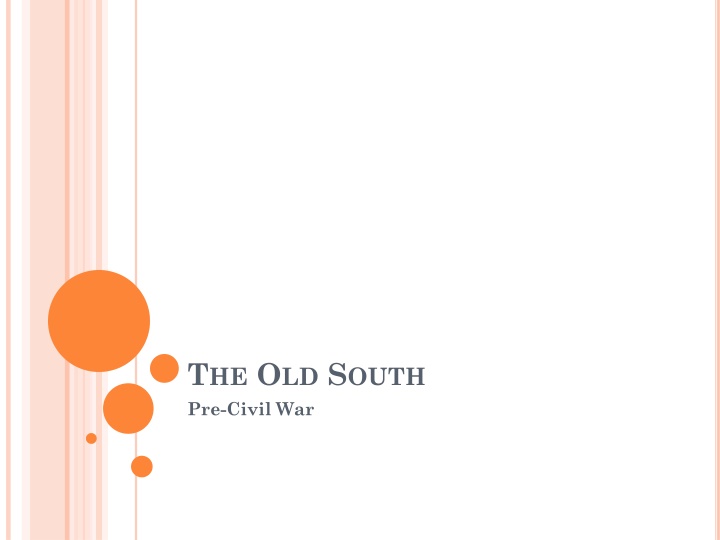

![❤[PDF]⚡ Civil War Talks: Further Reminiscences of George S. Bernard and His Fel](/thumb/20551/pdf-civil-war-talks-further-reminiscences-of-george-s-bernard-and-his-fel.jpg)
